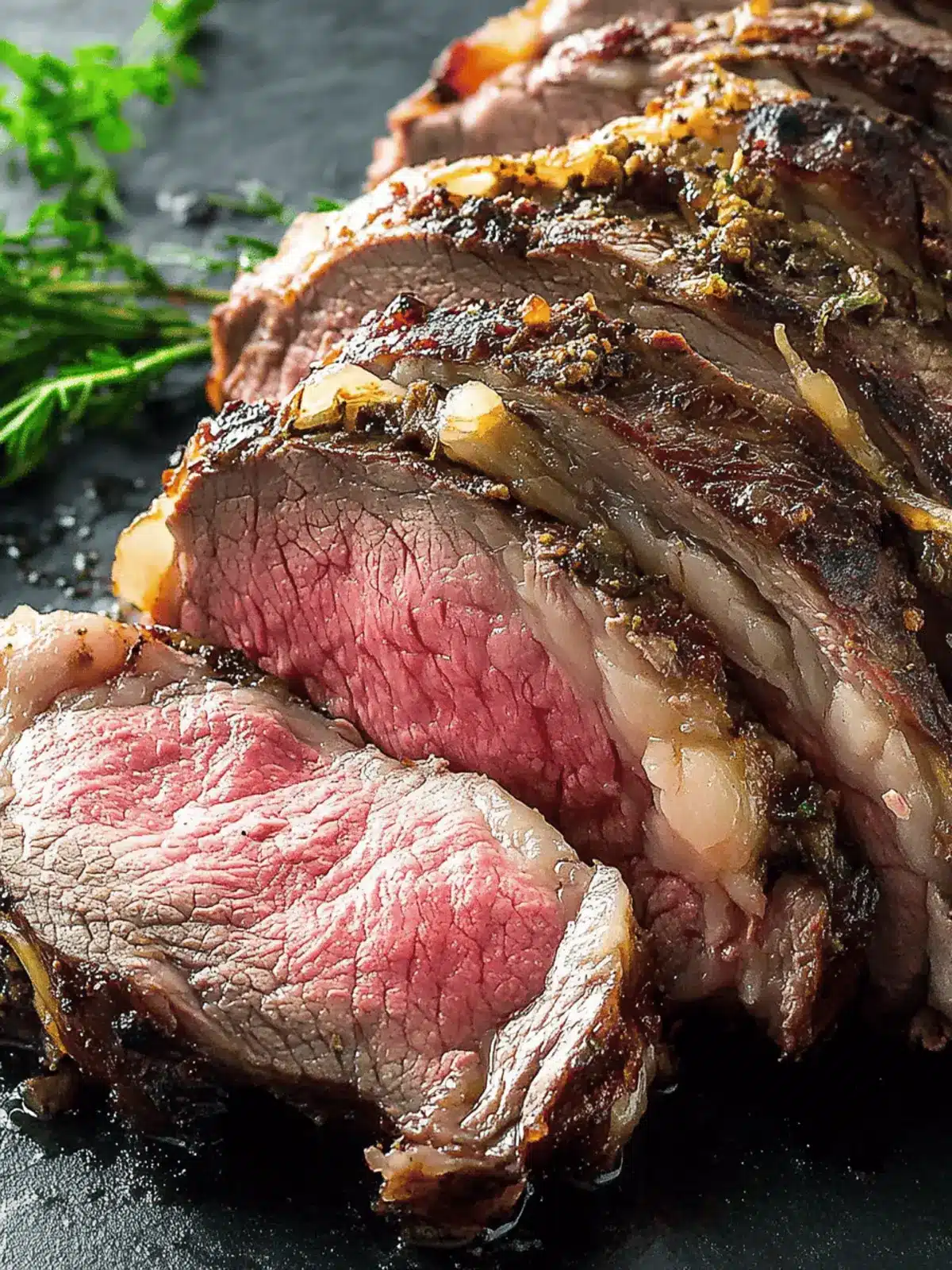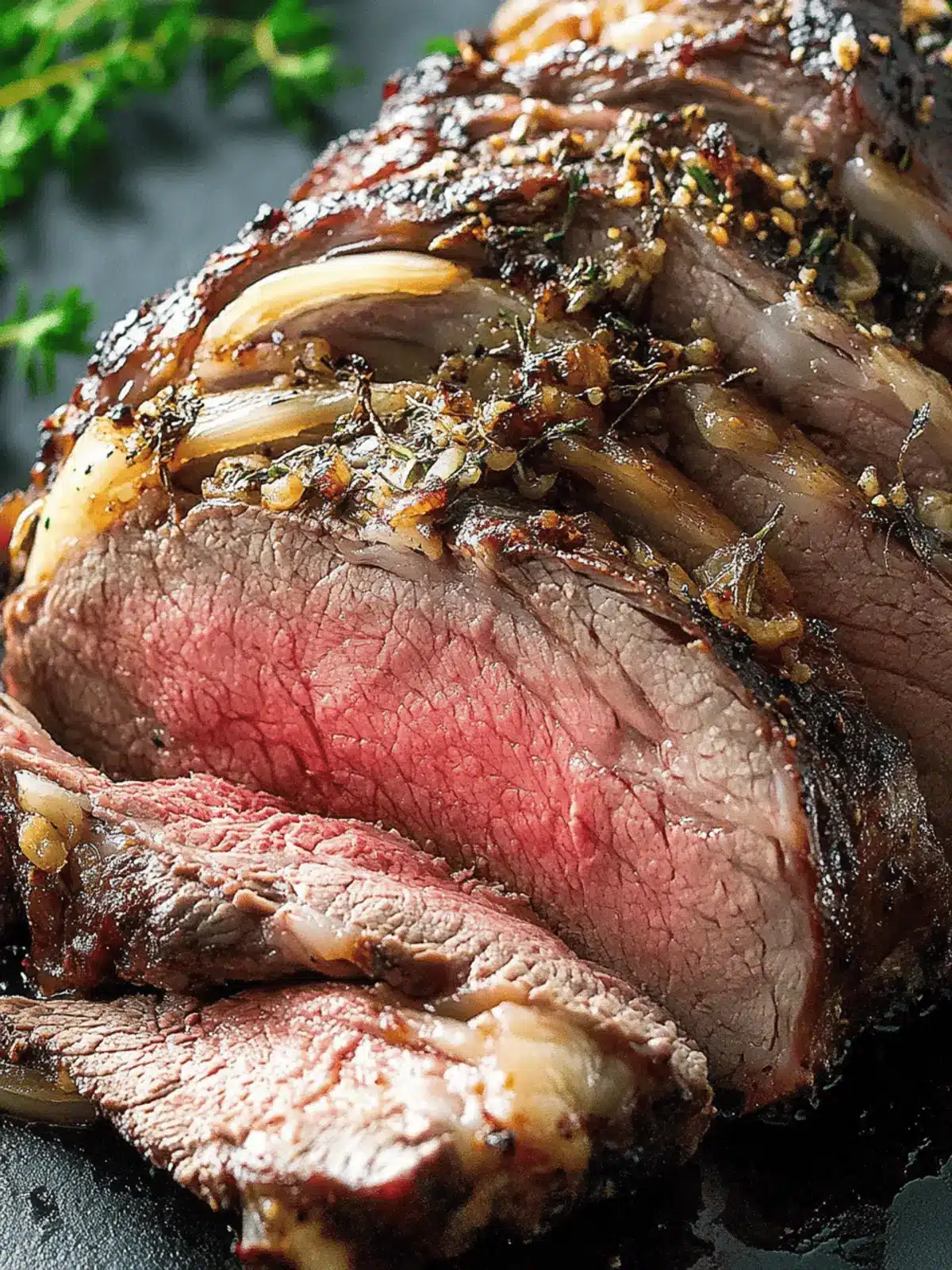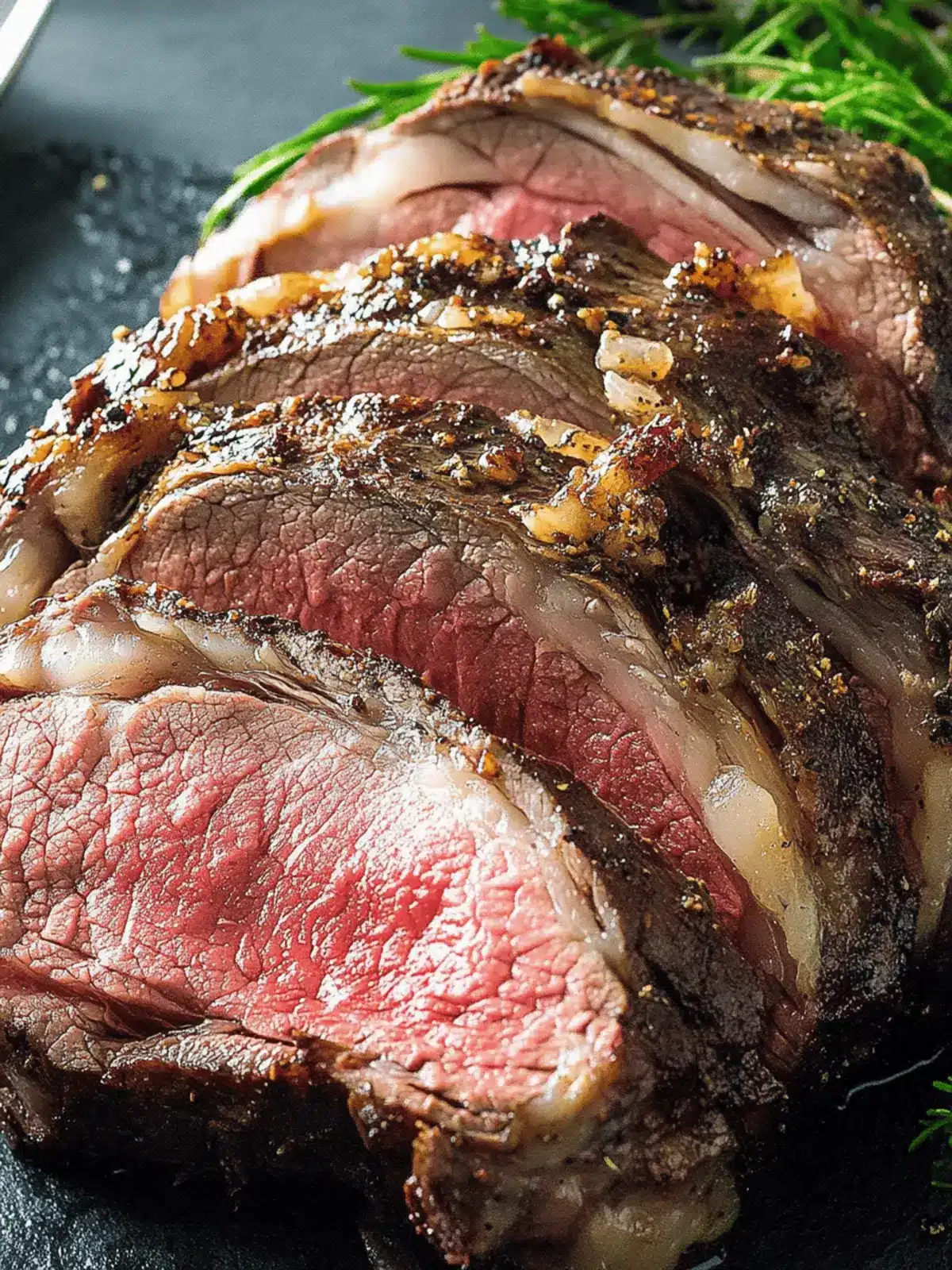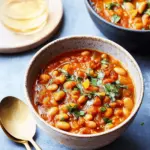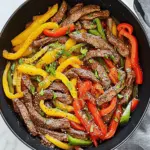The first time I tried reverse sear prime rib, I wasn’t just captivated by the mouthwatering aroma wafting through my kitchen; I was also amazed at how effortlessly it transformed a simple gathering into a feast fit for royalty. Imagine your guests’ faces lighting up as they sink their teeth into perfectly cooked, medium-rare meat with a beautifully charred crust—that’s the kind of magic this recipe brings.
With its tantalizing flavors and tender texture, this prime rib recipe is your ticket to stress-free entertaining. You can prepare it ahead of time, so you don’t find yourself scrambling in the kitchen while your visitors are sipping wine and enjoying the holidays. Instead, you’ll be the relaxed host, ready to serve the star of the show! Whether it’s a family celebration or an elegant dinner party, this mouthwatering prime rib will create lasting memories and satisfied smiles around your table. Let’s dive into this delicious journey!
Why is Reverse Sear Prime Rib a Must-Try?
Unforgettable Flavor: This method locks in juiciness and enhances the natural, rich flavor of the prime rib, creating a dish that’s truly mouthwatering.
Stress-Free Preparation: You can prepare this holiday roast ahead of time, allowing you to enjoy quality time with your guests.
Perfectly Cooked: The reverse sear technique ensures a beautifully even cook from edge to center, delivering a flawless medium-rare every time.
Impressive Presentation: With its stunning crust and inviting aroma, this prime rib is sure to wow your friends and family.
Versatile Adaptation: Get creative by swapping in different herbs or even experimenting with different cuts of meat! For more culinary inspiration, check out our guide on creative roast variations.
This recipe not only satisfies the palate but also elevates any dining experience into something extraordinary!
Reverse Sear Prime Rib Ingredients
For the Prime Rib
• Prime Rib of Beef (3 pounds, well marbled) – Choose USDA Prime or AAA ratings for the best flavor and tenderness.
• Garlic Cloves (2, sliced) – Adding aromatic depth, garlic infuses the meat with delightful flavor.
• Dijon Mustard (optional, 2 tsp) – This optional tang adds richness and aids in browning the roast.
For Seasoning
• Kosher Salt – Essential for drawing out moisture and enhancing natural flavors; season generously.
• Black Pepper – Freshly ground pepper adds a warm, spicy kick to balance the richness of the beef.
• Fresh or Dry Thyme (optional) – A sprinkle of thyme introduces a lovely herbal note to the dish.
This reverse sear prime rib is not only a beautiful centerpiece for your holiday roast, but it also guarantees delightful flavors that will have your guests coming back for seconds!
How to Make Reverse Sear Prime Rib
-
Pre-season (Optional): If you want to intensify the flavor, dry brine your roast a day in advance. Generously salt it and refrigerate to create a delicious crust later on.
-
Prep the Roast: Start by patting the roast dry with paper towels. Then, insert garlic slivers into small slits, brush with Dijon mustard if using, and liberally season with salt, pepper, and thyme. Place in a foil-lined pan.
-
Low Temp Roast: Preheat your oven to a cozy 250°F (121°C). Roast the prime rib fat-side up for 2 to 2¼ hours. Aim for an internal temperature of 120°F (49°C) for medium-rare or 130°F (54.4°C) for medium.
-
Rest the Roast: Once done, take the roast out of the oven and cover it loosely with foil. Let it rest for 30-90 minutes; this helps retain all those juicy flavors!
-
High Temp Finish: Raise your oven temperature to 500°F (260°C). Return the roast to the oven for another 6-10 minutes, monitoring closely until the exterior is perfectly browned, achieving an internal temperature of 130°F (54.4°C) for medium-rare or 140°F (60°C) for medium.
-
Slice and Serve: Carve the meat off the bones and cut into hearty pieces. Serve immediately, drizzled with gravy or au jus for that extra luscious touch.
Optional: Garnish with fresh thyme for a lovely aroma and presentation.
Exact quantities are listed in the recipe card below.
Storage Tips for Reverse Sear Prime Rib
-
Room Temperature: If serving soon, let the prime rib sit at room temperature for no more than 2 hours to maintain quality and safety.
-
Fridge: Store leftover reverse sear prime rib in an airtight container for up to 3 days. It will stay fresh and flavorful when properly sealed.
-
Freezer: For longer storage, freeze the sliced roast in a freezer-safe container for up to 3 months. To prevent freezer burn, wrap tightly with foil or freezer wrap.
-
Reheating: When ready to enjoy leftovers, reheat gently in a low oven at 250°F (121°C) until warmed through, ensuring the meat remains tender and juicy.
Reverse Sear Prime Rib Variations
Feel free to customize your reverse sear prime rib with these delightful twists that enhance flavor and fun!
-
Herb-Infused:
Mix fresh rosemary and sage with the thyme for a more aromatic experience. The addition of these herbs elevates the flavor profile beautifully. -
Coffee Rub:
Incorporate ground coffee into your seasoning mix for a deep, bold flavor. This unexpected twist brings an earthy note that will intrigue your guests. -
Spicy Kick:
Add crushed red pepper flakes or your favorite hot spice blend to the seasoning for a hint of heat. It’s a delicious way to surprise the taste buds! -
Smoky Flavor:
Opt for smoked salt instead of regular kosher salt to impart a rich, smoky essence to the beef. This variation will remind you of backyard barbecues with a gourmet twist. -
Balsamic Glaze:
Drizzle a balsamic reduction over the finished prime rib for a sweet and tangy contrast to the savory meat. This will add an eye-catching gloss and burst of flavor. -
Garlic Butter Finish:
Top the sliced roast with herbed garlic butter just before serving. Melting butter over the warm meat enhances richness and adds a luxurious touch. -
Mustard Variations:
Experiment with different mustards like whole grain or spicy brown for extra texture and flavor nuances. It’s a simple swap that makes a significant impact. -
Sear It Differently:
Instead of a high-heat oven finish, try searing the roast on the stovetop in a cast-iron skillet. This method gives you control over the crust and flavor!
Your reverse sear prime rib will become an even more memorable dish with these variations that cater to different preferences, making every celebration uniquely delightful!
Make Ahead Options
These Reverse Sear Prime Rib preparations are perfect for busy home cooks looking to streamline their holiday meals! You can dry brine the roast up to 24 hours in advance by generously salting and refrigerating it, which enhances the flavor and helps develop a crust. Additionally, you can prepare the garlic slivers and seasoning blends ahead of time, storing them in the fridge until you’re ready to prep the roast. When it’s time to cook, simply follow the roasting steps, and rest assured that your prime rib will still be just as delicious and tender! With these make-ahead strategies, you’ll create a stress-free cooking experience while enjoying the company of your guests.
Expert Tips for Reverse Sear Prime Rib
-
Temperature Monitoring: Keep a close eye on the roast’s internal temperature using a digital meat thermometer, ensuring it reaches the perfect doneness without overcooking.
-
Resting Time: Don’t skip the resting period after roasting! This allows the juices to redistribute, ensuring your reverse sear prime rib is moist and tender.
-
Even Seasoning: Apply the kosher salt and spices evenly over the surface, avoiding clumping. This will enhance flavors and ensure a delightful crust.
-
Garlic Insertion Technique: When inserting the garlic cloves, make sure the slits are deep enough to infuse flavor but don’t cut too far into the meat, which could affect cooking.
-
High Sear Precision: During the final high-temperature phase, monitor the roast closely to achieve that beautiful, browned crust without burning.
By following these tips, your reverse sear prime rib will not only be delicious but will also impress your guests!
What to Serve with Reverse Sear Prime Rib?
Creating the perfect meal is all about harmony and balance, and this spectacular prime rib deserves wonderful companions to elevate the entire experience.
-
Creamy Mashed Potatoes: Smooth and buttery mashed potatoes soak up the savory juices, enhancing each bite of succulent beef. Their comforting texture provides a satisfying contrast to the richness of the roast.
-
Garlicky Roasted Asparagus: Fresh asparagus, lightly roasted with garlic, adds a vibrant green element that brightens the meal. The crunchy exterior and tender interior perfectly complement the luscious nature of the prime rib.
-
Yorkshire Pudding: Puffing up beautifully, these light and airy pastries pair perfectly with gravy, making a classic team with the prime rib. Their crispy edges and soft center bring a delightful texture to your plate.
-
Roasted Broccoli with Lemon Zest: The lemony brightness of roasted broccoli cuts through the richness with its crisp and tender bite. This adds a fresh note, balancing flavors while introducing vibrant color to your table.
-
Horseradish Cream Sauce: This zesty sauce adds a perfect kick to every slice of prime rib, enhancing its rich flavors. The coolness of the cream offers a refreshing contrast that keeps each mouthful exciting.
-
Full-Bodied Red Wine: A robust Cabernet Sauvignon complements the hearty flavors of the prime rib, enriching the dining experience. The wine’s tannins work wonderfully with the marbled meat, creating a harmonious pairing.
-
Decadent Chocolate Cake: Finish your feast with a rich slice of chocolate cake that provides a sweet ending. The deep cocoa flavors contrast beautifully with the savory roast, leaving a delightful taste on your palate.
Each of these accompaniments promises to create a memorable dining experience, highlighting the succulent flavors of your reverse sear prime rib while inviting joy and fulfillment to the gathering!
Reverse Sear Prime Rib Recipe FAQs
What should I look for when selecting prime rib?
Absolutely! When choosing your prime rib, look for a well-marbled cut with a bright red color and a generous layer of fat on top. USDA Prime or AAA ratings are your best bets for flavor and tenderness. If you see dark spots and dryness, steer clear, as these indicate freshness issues.
How can I store leftover prime rib?
Very! To store leftover reverse sear prime rib, place it in an airtight container and refrigerate for up to 3 days. This will keep it fresh and flavorful. Be sure to let it cool to room temperature before sealing it to avoid moisture build-up.
Can I freeze my leftover prime rib?
Absolutely! For longer storage, slice the roast and wrap it tightly in foil or freezer-safe wrap, then place it in a freezer-safe container. It can be frozen for up to 3 months. When you’re ready to enjoy it again, thaw it in the refrigerator overnight and gently reheat in a low oven.
What should I do if my prime rib is overcooked?
Don’t worry; it happens to the best of us! If your reverse sear prime rib comes out overcooked, slice it thinly to make the meat easier to chew and consider serving it with a rich gravy or sauce. A flavorful au jus can help add moisture back into the dish, improving the experience.
Are there any dietary considerations for this recipe?
Definitely! When serving reverse sear prime rib, be mindful of dietary restrictions. If cooking for guests with allergies, check for common allergens like garlic or mustard. Additionally, while this recipe is great for meat lovers, pairing it with hearty vegan or vegetarian sides can create a balanced meal for all dietary preferences.
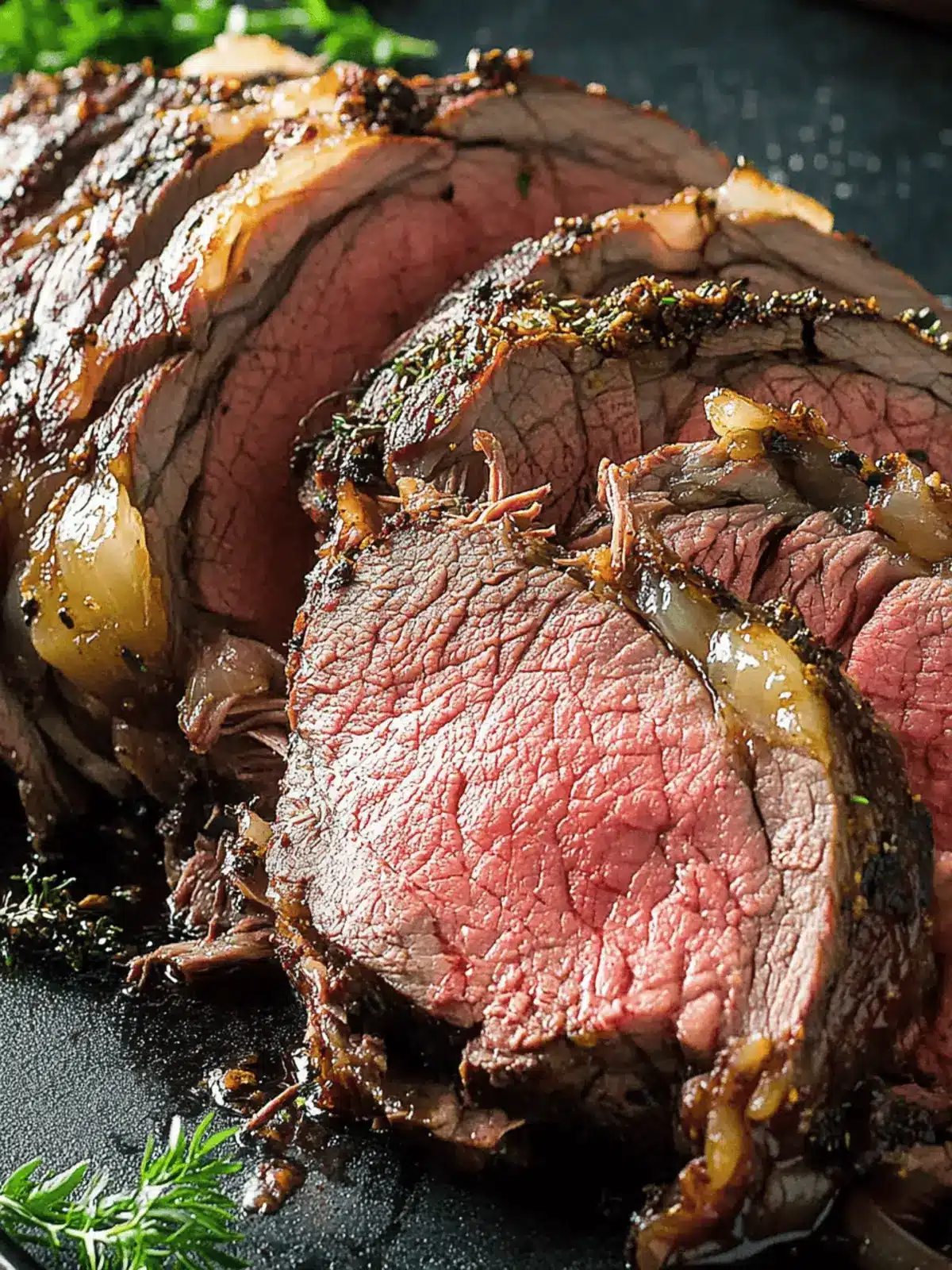
Mouthwatering Reverse Sear Prime Rib Perfect for Celebrations
Ingredients
Equipment
Method
- Pre-season (Optional): If you want to intensify the flavor, dry brine your roast a day in advance. Generously salt it and refrigerate to create a delicious crust later on.
- Prep the Roast: Start by patting the roast dry with paper towels. Then, insert garlic slivers into small slits, brush with Dijon mustard if using, and liberally season with salt, pepper, and thyme. Place in a foil-lined pan.
- Low Temp Roast: Preheat your oven to a cozy 250°F (121°C). Roast the prime rib fat-side up for 2 to 2¼ hours. Aim for an internal temperature of 120°F (49°C) for medium-rare or 130°F (54.4°C) for medium.
- Rest the Roast: Once done, take the roast out of the oven and cover it loosely with foil. Let it rest for 30-90 minutes; this helps retain all those juicy flavors!
- High Temp Finish: Raise your oven temperature to 500°F (260°C). Return the roast to the oven for another 6-10 minutes, monitoring closely until the exterior is perfectly browned, achieving an internal temperature of 130°F (54.4°C) for medium-rare or 140°F (60°C) for medium.
- Slice and Serve: Carve the meat off the bones and cut into hearty pieces. Serve immediately, drizzled with gravy or au jus for that extra luscious touch.
- Optional: Garnish with fresh thyme for a lovely aroma and presentation.

